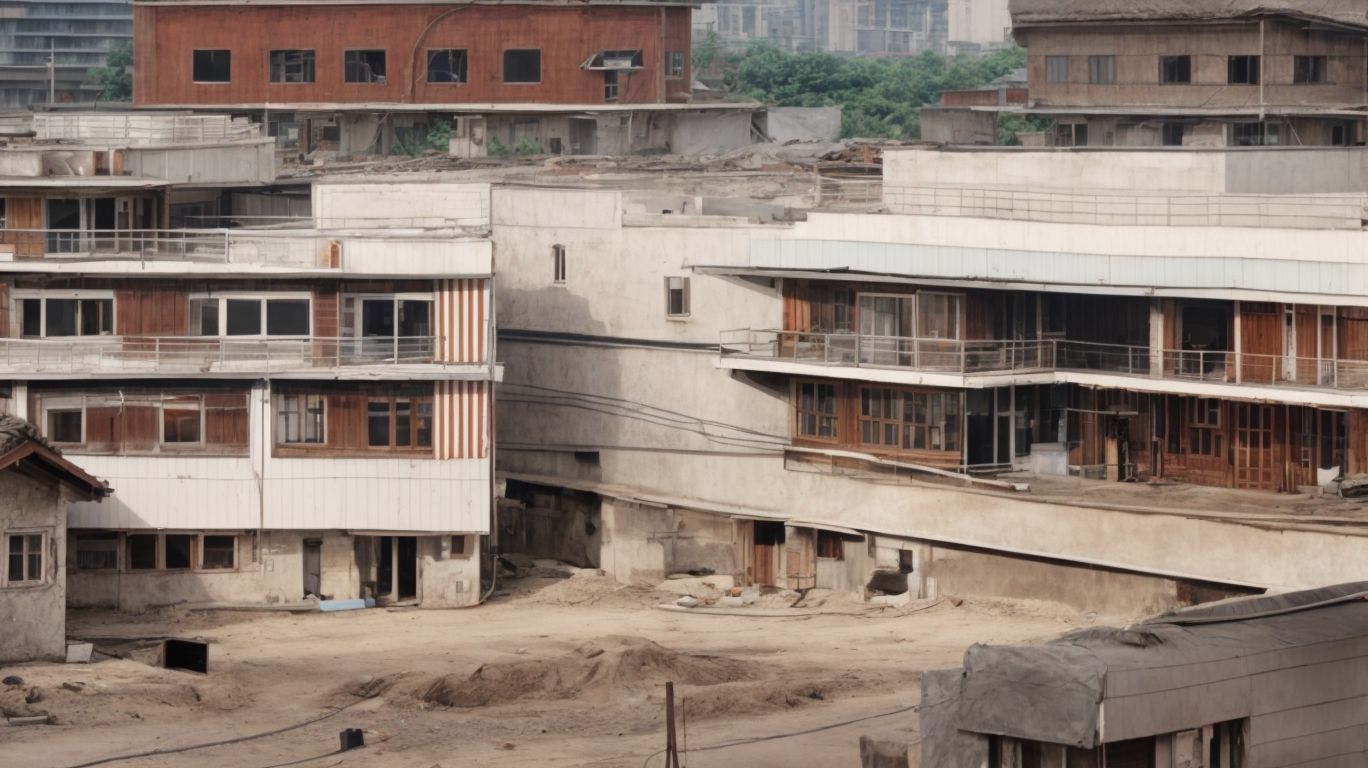
Choosing the Right Retrofitting Technique for Your Property
Are you considering retrofitting your property but unsure of where to start? Retrofitting is an essential process for ensuring the safety and resilience of buildings against various hazards.
In this article, we will explore the importance of retrofitting, the benefits it offers, and the different types of retrofitting techniques available. We will also discuss how to choose the right technique for your property and the steps involved in the retrofitting process. Whether you are a homeowner, property manager, or investor, this guide will help you make informed decisions to protect your property.
What Is Retrofitting?
Retrofitting is the process of strengthening and upgrading the structural integrity of existing buildings or properties to enhance their safety and resilience, particularly against seismic hazards and other potential risks.
This process is vital, as it ensures that older buildings meet modern safety standards and are better equipped to withstand natural disasters and other unforeseen events.
Seismic retrofitting, in particular, involves specific techniques such as adding reinforcement to the building’s structure, improving its foundation, or implementing base isolation systems. Sustainability plays a crucial role in retrofitting, with a focus on using eco-friendly materials and energy-efficient solutions.
The materials used for retrofitting vary depending on the specific needs of the building, with options including steel, carbon fiber, and high-strength concrete.
Why Is Retrofitting Important?
Retrofitting holds immense importance due to its ability to enhance the structural stability and safety of buildings, mitigating the potential impact of seismic events, and improving overall performance while addressing environmental impact and sustainability concerns.
Building retrofitting plays a critical role in ensuring compliance with updated building codes and regulations, reducing risks for occupants and the surrounding community.
Additionally, retrofitting contributes to the longevity of structures, potentially avoiding costly repairs or even catastrophic failures.
This approach aligns with the growing emphasis on sustainable construction practices, reducing energy consumption and waste production while promoting a healthier environment for future generations.
What Are The Benefits Of Retrofitting?
Retrofitting offers a wide array of benefits, including improved property resilience, enhanced safety, increased property value, and the implementation of sustainable retrofit solutions, thereby ensuring a comprehensive building condition assessment and long-term efficiency gains.
This approach allows property owners to fortify their buildings against natural disasters and other hazards, reducing the risk of damage and ensuring the safety of occupants.
Retrofitting contributes to energy efficiency, cutting down operational costs and promoting a more sustainable environmental footprint. By addressing and updating outdated building systems, retrofits also play a crucial role in efficient building management, resulting in improved functionality and reduced maintenance expenses over time.
What Are The Different Types Of Retrofitting Techniques?
Retrofitting encompasses various techniques tailored to address specific concerns such as seismic vulnerabilities, energy efficiency, climate resilience, flood protection, and fire safety, while also covering structural renovations and tailored retrofit solutions.
These techniques are utilized to enhance the structural integrity of buildings and infrastructure, reducing the risks associated with seismic activities, mitigating energy consumption, and promoting sustainable construction practices. They play a critical role in mitigating the impact of extreme weather events by implementing flood protection measures and improving fire safety standards.
Through the application of customized retrofit solutions, buildings can be optimized to meet contemporary standards while ensuring a sustainable and resilient built environment.
Seismic Retrofitting
Seismic retrofitting involves the strategic reinforcement and modification of building structures to withstand the impact of earthquakes, encompassing specialized engineering and design considerations for effective retrofit implementation.
This process typically includes various structural reinforcement techniques such as adding steel braces or frames, strengthening foundations, and enhancing connections between building elements.
Earthquake-resilient building design principles play a crucial role in retrofit engineering, aiming to minimize structural damage and ensure occupant safety during seismic events. The intricacies of retrofit engineering encompass thorough assessment of existing structures, meticulous planning, and the use of advanced materials and technologies to enhance seismic performance.
Implementing retrofit measures is vital for mitigating seismic hazard risks and fostering resilience in communities prone to earthquakes.
Energy Retrofitting
Energy retrofitting focuses on enhancing building efficiency through the adoption of advanced materials, cost-benefit analysis, and targeted investments, aiming to optimize energy usage and achieve sustainable retrofit applications.
This approach to retrofitting involves evaluating the existing building systems to identify potential areas for improvement, such as insulation, lighting, HVAC systems, and renewable energy integration. By focusing on efficiency gains, energy retrofitting aims to reduce energy consumption, lower utility costs, and minimize environmental impact.
Material considerations play a crucial role, as the selection of eco-friendly and durable materials can significantly contribute to long-term energy savings and overall building performance. Incorporating cost-benefit analysis helps in assessing the financial viability of retrofit measures, ensuring that the investments yield substantial energy savings and environmental benefits. Ultimately, strategic investments in energy retrofitting serve as a proactive approach towards enhancing energy efficiency and promoting sustainable building practices.
Climate Retrofitting
Climate retrofitting involves the integration of sustainable solutions, specialized construction materials, and comprehensive building design requirements to enhance the resilience of buildings against climate-related impacts and sustainability concerns.
Climate retrofitting aims to minimize environmental impact and improve resource efficiency by incorporating sustainable strategies such as energy-efficient systems, water conservation measures, and passive design principles.
Specialized building materials, such as high-performance insulation and green roofs, play a crucial role in optimizing building performance and reducing energy consumption. Retrofit assessment criteria are utilized to evaluate the existing building conditions and identify specific areas for improvement, ensuring that the retrofitting process is tailored to address climate-related challenges and sustainability requirements.
Flood Retrofitting
Flood retrofitting involves the implementation of specialized methods and industry best practices to meet stringent building construction standards, aiming to mitigate the impact of flooding events and ensure comprehensive retrofit solutions for flood-prone areas.
Recognizing the challenges of flood-prone areas is crucial for effective retrofitting strategies. These strategies should be tailored to the specific needs of the area, utilizing methods such as elevating structures, installing flood barriers, and improving drainage systems. Adhering to industry standards and regulations ensures the effectiveness and resilience of these solutions, providing long-term protection against flood damage. By implementing these measures, communities can better prepare for and withstand the impact of flooding, safeguarding lives and properties.
Fire Retrofitting
Fire retrofitting encompasses performance-based certifications, advanced retrofit technologies, and rigorous inspection protocols aimed at enhancing building resilience and safety against fire-related hazards through strategic retrofit implementations.
Performance-based certifications are crucial in ensuring that retrofit technologies meet safety standards and regulations, providing reassurance to building owners and occupants.
Advancements in fire-resistant materials and alarm systems have greatly improved the retrofitting process, offering enhanced protection against potential fire incidents.
Thorough retrofit inspections are essential in identifying vulnerabilities and ensuring that the technology effectively mitigates fire hazards, contributing to overall building safety and resilience.
How To Choose The Right Retrofitting Technique For Your Property?
Choosing the appropriate retrofitting technique for your property involves a comprehensive evaluation of seismic, efficiency, and sustainability considerations. This requires careful assessment of retrofit design options and awareness of potential retrofit challenges.
This evaluation should encompass property-specific assessments to determine the most suitable retrofitting method. It is crucial to consider the existing structural conditions, building materials, and the property’s vulnerability to seismic activity.
Retrofit design considerations should account for the integration of energy-efficient technologies and sustainable building practices. Identifying potential challenges associated with different retrofit methods and applications is essential to proactively address any structural, logistical, or regulatory hurdles that may arise during the retrofitting process.
Assess Your Property’s Vulnerabilities
The first step in choosing a retrofitting technique is to conduct a comprehensive assessment of your property’s vulnerabilities. This involves evaluating the structural integrity of the property and identifying potential points of weakness. By considering specific retrofit measures, standards, and project planning guidelines, you can address critical retrofit considerations and determine the most suitable retrofit measures to enhance resilience.
It is essential to consider retrofit standards and codes to ensure compliance with industry best practices and regulations. Adherence to project planning guidelines is crucial to establish a systematic approach for implementing retrofit measures, prioritizing safety, and maximizing the effectiveness of the retrofitting process.
Consider Your Budget
Budget considerations play a pivotal role in choosing a retrofitting technique. This requires a comprehensive cost-benefit analysis, strategic retrofit investment decisions, and prioritization of retrofit performance to ensure efficient allocation of resources.
This strategic approach to budgeting for retrofitting projects entails assessing the potential long-term savings and energy efficiency gains against the initial costs. By identifying the areas where retrofitting efforts can yield the most significant performance improvements, businesses can prioritize projects that offer the best returns on investment.
Strategic investment planning ensures that resources are allocated where they can make the most impact, optimizing the budget for efficiency and sustainability goals.
Research The Different Techniques
Conducting thorough research on the diverse retrofitting techniques available is essential to gain insights into innovative retrofit solutions, advanced retrofit technologies, and industry best practices, guiding informed decisions on the most suitable retrofit methods.
It is crucial to explore the latest technological advancements in retrofitting, as these innovations often offer more efficient and sustainable solutions for upgrading existing infrastructure.
By delving into the intricacies of retrofitting, individuals and organizations can ensure compliance with industry standards, which is integral for the successful adoption of specific retrofit methods and technologies.
This comprehensive exploration of retrofitting options provides a solid foundation for making well-informed choices that align with the needs and objectives of the project at hand.
Consult With Experts
Seeking guidance from retrofit experts and consulting with specialized professionals is crucial to gain valuable retrofit recommendations, enhance awareness of retrofit options, and identify reputable contractors for comprehensive property assessment and structural strengthening.
By engaging in expert consultation, individuals can gain insightful recommendations tailored to their specific retrofit needs, which can potentially save time and resources. Consulting with professionals helps in increasing awareness of the wide range of retrofit options available, allowing for informed decision-making. Seeking expert advice can aid in identifying reliable contractors with expertise in property assessment and structural strengthening, ensuring that the retrofit process is carried out with precision and reliability.
What Are The Steps Involved In Retrofitting?
The retrofitting process encompasses consecutive steps such as property assessment, meticulous planning, effective implementation, continuous monitoring, and proactive maintenance, all managed through comprehensive project management and thorough retrofit inspections.
To begin, property assessment is crucial for identifying the specific areas that require retrofitting. This initial step sets the stage for strategic planning, which entails developing a clear roadmap for the retrofit project, including budgeting, timelines, and resource allocation.
Successful implementation follows, where skilled professionals execute the planned retrofit measures. Ongoing monitoring plays a pivotal role, ensuring that the retrofitted elements operate as intended, while diligent maintenance becomes imperative to sustain the retrofit’s effectiveness over time. Throughout this process, project management and retrofit inspections play a critical role in ensuring successful outcomes and building resilience.
Property Assessment
The initial phase of retrofitting involves a comprehensive property assessment, encompassing risk evaluation, compliance with building regulations, feasibility studies, and the determination of retrofit requirements in alignment with established retrofit guidelines.
This critical step ensures that all potential hazards and vulnerabilities are identified, and the regulatory compliance ensures that the retrofitting process meets legal requirements.
Feasibility studies help in assessing the practicality and financial viability of the retrofit, while the identification of specific retrofit requirements ensures that the property is upgraded in accordance with established guidelines, ultimately enhancing its resilience and safety standards.
Planning and Design
Thorough planning and design activities are essential in retrofitting, involving the formulation of retrofit strategies, tailored retrofit design options, and the integration of advanced retrofit technologies to enhance building performance and resilience against potential risks.
Effective planning and design play a crucial role in optimizing the energy efficiency, sustainability, and safety aspects of retrofit projects. By implementing strategic retrofit strategies, buildings can be transformed to meet the evolving demands of occupants and the environment.
Customized design considerations ensure that the retrofit solutions are specifically tailored to the unique needs and characteristics of each building, maximizing their potential performance. The adoption of advanced retrofit technologies offers opportunities to achieve significant improvements in building functionality, ensuring long-term resilience and durability.
Implementation
Efficient implementation of retrofit solutions and strategies involves meticulous project management, tailored retrofit applications, and adherence to established retrofit guidelines, ensuring the successful integration of chosen retrofit methods and technologies.
Project management plays a crucial role in overseeing the entire process, from initial assessment and planning to execution and monitoring. It ensures that the project stays on track, within budget, and meets the desired objectives.
Customized retrofit applications are essential for addressing specific challenges and requirements of each building, optimizing the effectiveness of the retrofit solutions. Adhering to established retrofit guidelines guarantees conformity with industry standards, safety, and sustainability, leading to seamless integration of retrofit technologies for long-term benefits.
Monitoring and Maintenance
Continuous monitoring and proactive maintenance form the cornerstone of retrofitting, involving regular retrofit inspections, advanced retrofit technologies, and a steadfast focus on building safety and durability to ensure sustained retrofit performance.
This approach is essential in enhancing the resilience of existing structures. It allows for the identification of potential issues before they escalate, preventing costly repairs and ensuring long-term viability of the retrofit.
The utilization of advanced retrofit technologies enables a more efficient and effective process, contributing to improved structural integrity and energy efficiency. Prioritizing building safety and durability leads to sustained retrofit performance and promotes a safer and more durable built environment.




No Comments